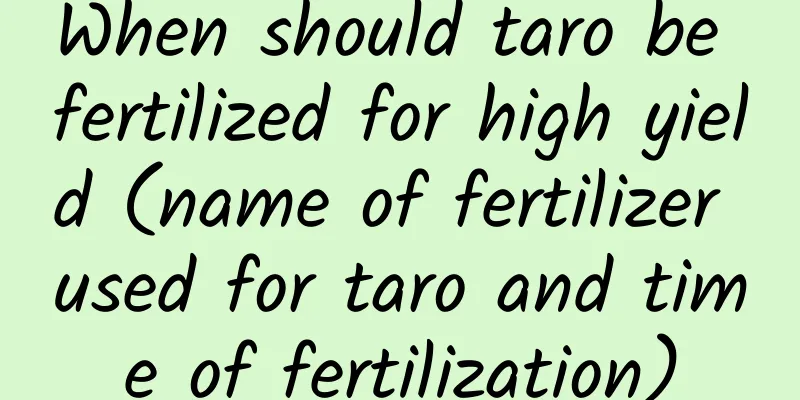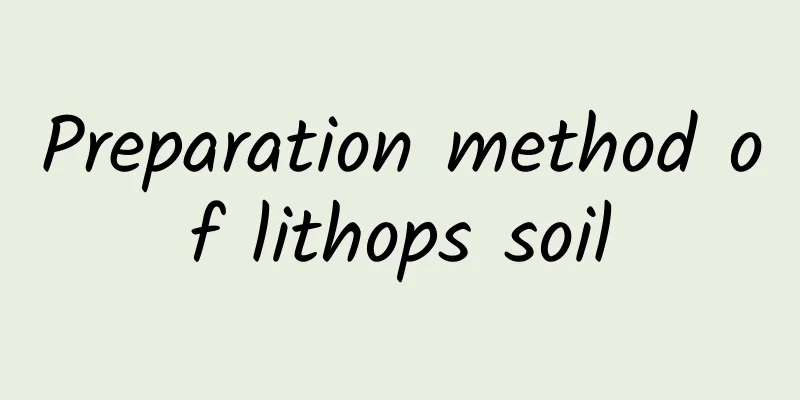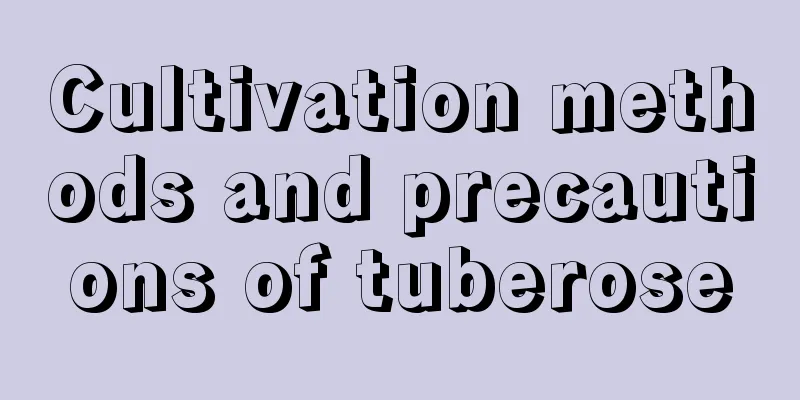When should taro be fertilized for high yield (name of fertilizer used for taro and time of fertilization)

|
Taro belongs to the yam family, such as potatoes, sweet potatoes, ginger, yam, etc. Taro is not cold-resistant and requires a high temperature and humid growing environment. Since its product is underground, the soil must be loose, well-drained, and rich in organic matter, otherwise the taro will grow poorly and its quality will decline. There are many taro growers here. As the saying goes, "Taro grows well during Qingming Festival and ginger grows well during Guyu Festival." It is almost Qingming Festival, and it is also the planting season for taro. Let's talk about how to fertilize taro. The fertilizer for taro is divided into base fertilizer, seed fertilizer and top dressing . Let’s talk about them separately. 1. Base fertilizerHere we usually plow the soil in winter, dry it, apply enough organic fertilizers, such as manure, soil and green manure, etc., and plow it deep into the soil in preparation for planting. The growing period of taro is relatively long, from sowing around the Qingming Festival to the harvest of taro during the Frost Descent season, a growing period of more than 6 months. In addition, the yield of taro is relatively high, so the amount of fertilizer required is large and long. Sufficient base fertilizer is the basis for high yield of taro. Therefore, if you want to achieve high and stable yields of taro, the use of base fertilizer is very important. Second, planting fertilizerWe basically use triple compound fertilizer as seed fertilizer, that is, we dig furrows according to a certain row spacing, arrange the seeds according to a certain plant spacing, and apply chemical fertilizer between seeds. There is no fixed rule for the amount of seed fertilizer per mu. If the soil is fertile and more base fertilizer is used, less seed fertilizer should be used, otherwise more should be used. It also depends on the type of fertilizer used, the content, and whether topdressing will be used in the future. Here we basically use 100-150 kilograms of triple compound fertilizer per acre, and some use more than 200 kilograms. Why are so many fertilizers used? Because we grow taro here, we basically apply fertilizer all at once. After the seeds are arranged, ridges are built and covered with film. We no longer cultivate the soil or apply top dressing. At most, we flush 1-2 times with water-soluble fertilizer. People in some places will add soil and apply fertilizer to taro, like some water taro in the south. 3. TopdressingTopdressing of taro can be combined with intertillage and soil cultivation. When the first leaf of the taro seedling unfolds, deep intertillage should be carried out to increase the ground temperature and promote the growth of the seedling. At this time, you can apply a seedling-promoting fertilizer, such as urea and other quick-acting nitrogen fertilizers, or you can apply some human manure or other organic fertilizers. When the plant height is about 50 cm and has 3-4 leaves, it is necessary to apply heavy fertilizers and combine it with soil cultivation, such as compound fertilizer, cake fertilizer, superphosphate, etc., to promote the growth of taro . When the taro has 5-6 leaves, add soil and apply top dressing, such as compound fertilizer, organic fertilizer, etc. The amount of topdressing is determined based on plant growth, soil fertility, and the amount of base fertilizer and seed fertilizer used. 【Summarize】 When we grow taro here, we seldom apply top dressing. We basically apply enough base fertilizer and seed fertilizer at one time. In the later stage, depending on the growth of the plant, we can apply some water-soluble fertilizer with the water when watering, such as high-potassium water-soluble fertilizer, to promote the growth and expansion of the taro and increase the yield . If the taro plants are too tall, it will affect the yield, so the amount of nitrogen fertilizer should not be too much. At the same time, attention should also be paid to chemical control to reduce plant height and increase yield and quality. |
Recommend
How to plant loofah?
Luffa is a vegetable with strong adaptability and...
When is the best time to take grape cuttings? How to increase the survival rate of cuttings?
1. Cutting time It can be taken by cuttings in su...
Does Asparagus Bamboo need watering every day?
Do you water asparagus fern every day? Asparagus ...
Why do plum blossoms drop leaves?
1. The temperature is too high 1. Reason: Plum bl...
Cultivation methods and precautions of ginseng banyan bonsai
Ginseng ficus bonsai is easy to grow. Do not expo...
Which month of the year is the most suitable time to sow Impatiens?
Impatiens , also known as henna, impatiens, and i...
Do peacock grass seeds germinate quickly?
1. Is the germination speed fast? Its germination...
Can eggshells be used as fertilizer? The correct way to make fertilizer
Eggshell fertilizer is a very useful calcium powd...
Will lucky bamboo die if its roots are cut? How to keep it after cutting its roots?
1. Will lucky bamboo die if its roots are cut? Lu...
Chlorophytum cultivation methods and precautions
1. Watering Chlorophytum needs water to grow. It ...
What to do if the leaves of Campanula serrata wilt
1. Caused by moisture Too much water: When we wat...
Key points for home care of Phalaenopsis
Phalaenopsis maintenance point 1: reasonable temp...
Cultivation methods and precautions of Dendrobium officinale
Growth habit First of all, it has relatively high...
How to grow strawberries well
Strawberry Growing Conditions Strawberry has stro...
How to make Christmas cactus flower bloom again after it fades (how to deal with it after it blooms so that it can bloom again)
How to make Christmas cactus flower bloom again a...









